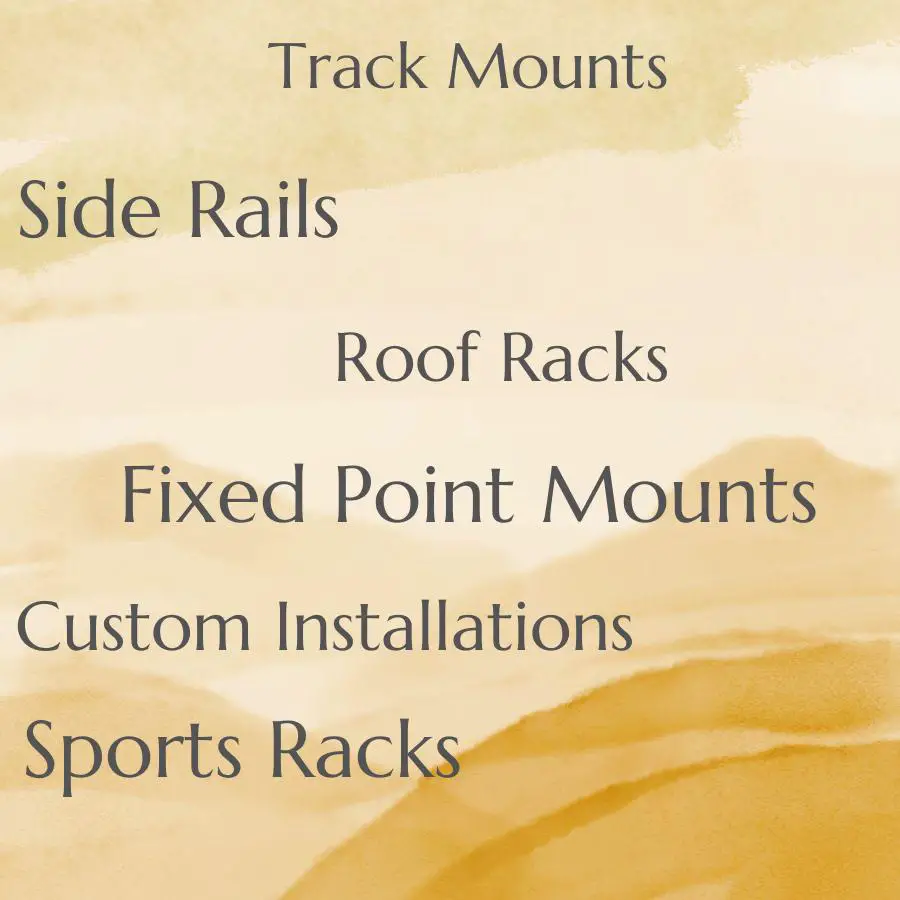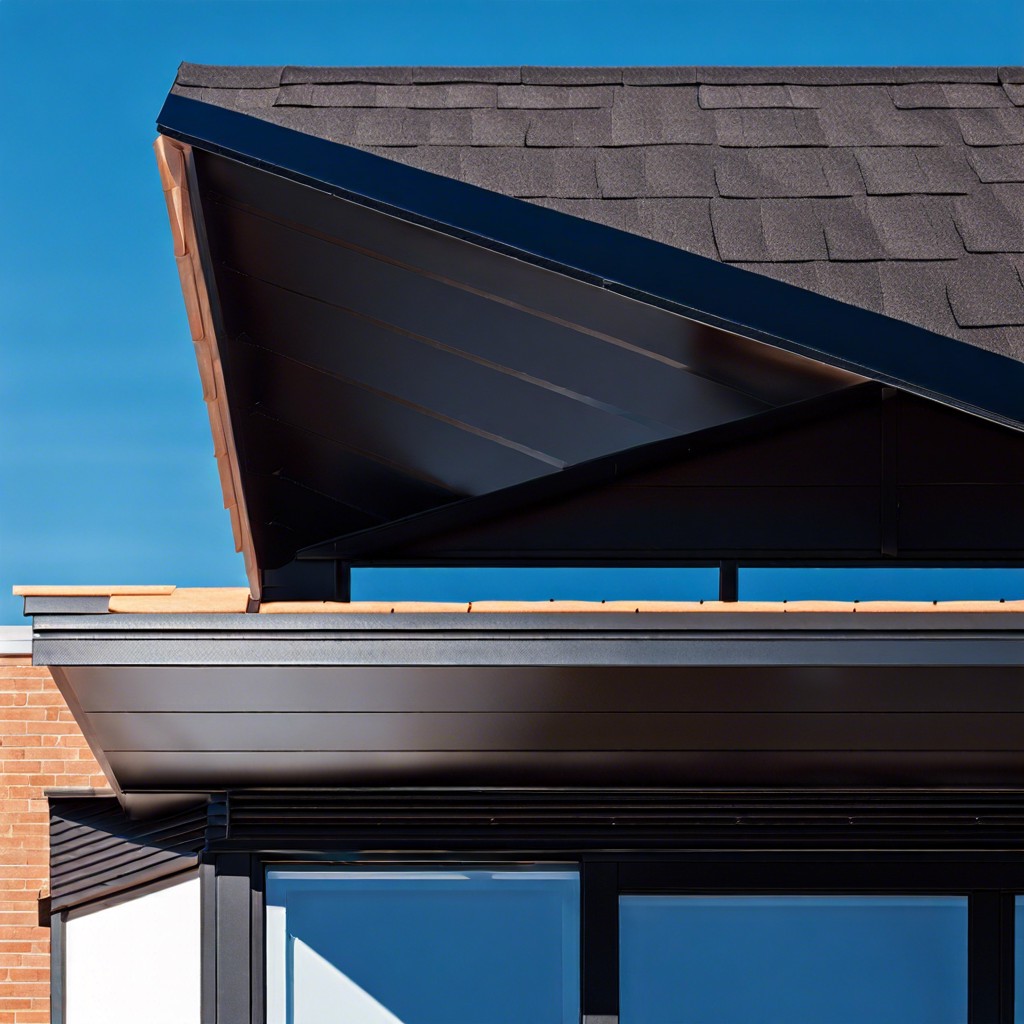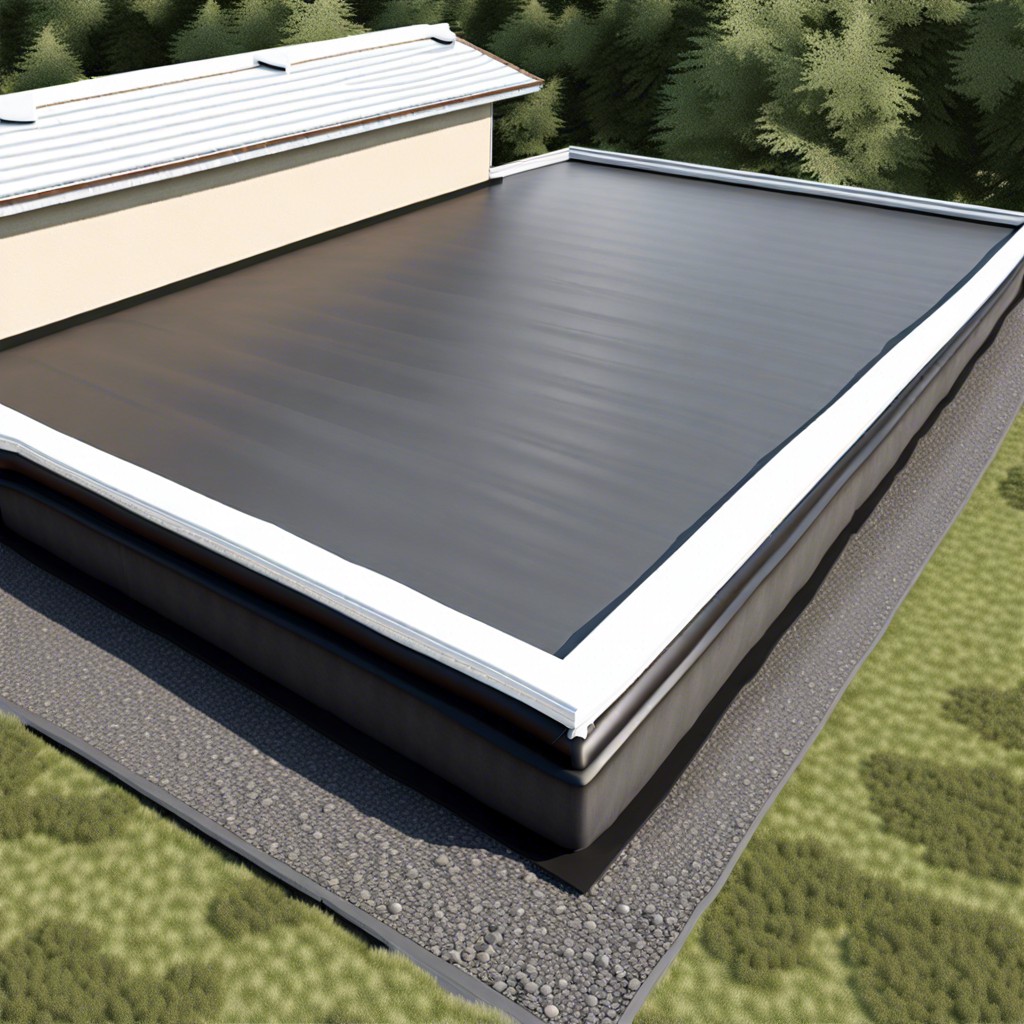Last updated on
Discover the various types of roof racks available in the market, designed to cater to your specific needs and enhance your vehicle’s storage capacity.
Are you an adventurous soul who loves to explore the great outdoors? Do you enjoy taking your bike, kayak, or surfboard with you on your travels? If so, then a roof rack is an essential accessory for your vehicle. Roof racks come in various shapes and sizes and are designed to carry different types of gear.
In this article, we’ll take a closer look at the different types of roof racks available in the market today. Whether you’re a weekend warrior or a seasoned traveler, there’s sure to be a roof rack that suits your needs.
So let’s dive into the world of roof racks and find out which one is right for you!
Naked / Bare Roofs

Naked roofs are vehicles without any pre-existing attachment points for roof racks. In this case, the most common type of roof rack is the clamp mount system that attaches directly to your car’s door frame.
These types of racks come with rubber pads that protect your vehicle from scratches and damage.
Clamp mounts can be used on almost any type of car and provide a secure fit for carrying bikes, kayaks, skis or snowboards. They’re also easy to install and remove when not in use.
Another option for naked roofs is suction cup mounts which attach directly onto the surface using vacuum pressure technology providing an excellent grip on smooth surfaces like glass or metal.
Side Rails – Flush
These types of roof racks attach to the existing mounting points on your car’s roof and provide a sleek and low-profile look. They are perfect for carrying bikes, kayaks, or cargo boxes without adding too much height to your vehicle.
Flush rail mounts come in different styles depending on the manufacturer of your car. Some have T-slots that allow you to slide accessories onto them while others require clamp-style attachments.
One advantage of using flush rail mounts is that they offer better aerodynamics than other types of roof racks since they sit closer to the body of the car. This means less wind resistance and improved fuel efficiency during long trips.
Side Rails – Raised
Raised side rails are typically found on SUVs, crossovers, and some wagons. The roof rack attaches directly to the raised side rails using a clamping system or a custom fit kit that matches your specific make and model.
This type of roof rack can carry various types of gear such as bikes, kayaks, skis/snowboards or cargo boxes.
Raised rail systems come in two different styles: flush-mounted or raised crossbars. Flush-mounted crossbars sit level with the top surface of the rail while still providing ample space for mounting accessories like bike racks or cargo carriers.
On the other hand, if you need more clearance between your gear and vehicle’s rooftop (for example when carrying bulky items), then consider getting a set up with higher-profiled bars which will provide additional height above those factory-installed siderails.
Factory Track Mounts
These tracks provide a secure and stable base for mounting various types of roof racks, including bike racks, ski racks, cargo boxes, and more. Factory track mounts offer versatility in terms of positioning your gear on the roof as they can be adjusted along the length of the track to accommodate different sizes and shapes.
One advantage of using factory track mounts is that they do not require any drilling or modification to your vehicle’s bodywork. This means that you can easily install or remove them without leaving any permanent marks or damage to your car’s exterior.
Another benefit is that most manufacturers design their products specifically for use with factory tracks. This ensures compatibility between different brands and models while also providing optimal performance in terms of load capacity and stability.
If you’re looking for an easy-to-install solution that offers flexibility when it comes to carrying gear on your vehicle’s roof, then consider investing in a set of factory track mounts.
Fixed Point Mounts
These mounts attach directly to the fixed points on your car’s roof, providing a secure and stable base for your gear. Fixed point mounts are typically used in vehicles that have pre-existing mounting points built into the roof, such as some SUVs or crossovers.
One of the benefits of using fixed point mounts is that they provide an incredibly strong foundation for carrying heavy loads. This makes them ideal for transporting larger items like kayaks or canoes safely and securely.
Another advantage of using fixed point mounts is that they offer more flexibility when it comes to choosing which type of rack you want to use. You can choose from various types of racks like bike racks, ski/snowboard racks, cargo boxes among others depending on what you need.
However, one downside with these types of mountings is that once installed; they cannot be removed easily without leaving holes in your car’s rooftop surface if not done by professionals.
Rain Gutter Racks
These racks are designed to fit onto the roof of your car by clamping onto the gutters that run along either side of it. They’re easy to install and remove, making them ideal for occasional use.
One advantage of using a rain gutter rack is that they can carry heavy loads without damaging your car’s roof. This makes them suitable for carrying items like kayaks or canoes, which require sturdy support during transportation.
Another benefit is their versatility; they come in different sizes and shapes to accommodate various types of gear such as bikes or skis. However, one downside is that not all vehicles have rain gutters; hence this type may not work on newer models.
Truck Canopy Racks
These racks are designed to fit on top of your truck’s canopy and provide additional storage space for all your camping essentials. They come in various sizes and configurations, depending on the size of your vehicle and the amount of gear you need to carry.
A typical truck canopy rack consists of two crossbars that run parallel to each other across the width of your vehicle’s roof. You can attach different types of mounts onto these bars, such as bike mounts or cargo boxes, depending on what type of equipment you need to transport.
One advantage that a truck canopy rack has over other types is its ability to keep items dry during inclement weather conditions since it sits above any waterline created by rainwater running down from higher points like trees or buildings.
Camper Top Racks
These racks are designed to fit on top of your truck’s camper shell and provide additional storage space for all your camping gear. Camper top racks come in various sizes and shapes, depending on the size of your truck’s bed and the type of gear you need to carry.
Whether you’re planning a weekend camping trip or embarking on an extended adventure, a camper top rack can help make packing easier by providing ample space for all your essentials. With this type of roof rack installed, you’ll have more room inside the cab while still being able to bring along everything that makes outdoor living comfortable.
Custom Track Installations
These types of roof racks require drilling into your vehicle’s roof to install tracks that run from front to back. Once installed, you can easily attach various accessories such as bike mounts or cargo boxes using compatible hardware.
Custom track installations offer a sleek and low-profile look while providing maximum versatility in terms of accessory options. They’re also great for those who frequently use their roof rack and need something that can withstand heavy loads.
However, it’s important to note that custom track installations are not reversible once installed. So if you plan on selling your vehicle in the future or don’t want a permanent modification made, this may not be the best option for you.
Custom Fixed Point Installations
These types of roof racks are designed to fit your specific make and model of the car, ensuring a perfect fit and maximum stability. Custom fixed point installations offer superior load capacity compared to other types of roof racks.
One advantage of custom fixed point installations is that they can be easily removed when not in use, leaving no trace behind. This feature makes them ideal for people who don’t want their vehicles to look like they’re always ready for adventure.
Another benefit is that these systems allow you to add various accessories such as bike mounts or cargo boxes without compromising on safety or stability while driving at high speeds.
Bike Mounts
Fortunately, there are roof racks designed specifically for bikes. Bike mounts come in various styles and designs to accommodate different types of bicycles.
Some bike mounts require you to remove the front wheel before mounting it on the rack, while others allow you to keep both wheels intact during transport.
One popular type of bike mount is the fork mount which secures your bicycle’s front fork onto the rack using a quick-release skewer or through-axle system. Another option is a frame mount that clamps onto your bicycle’s downtube or seat post.
When choosing a bike mount for your roof rack, consider factors such as compatibility with your vehicle and ease of use when loading and unloading bikes from the rack.
Snow Sports Racks
These racks are designed to carry skis and snowboards safely and securely on your vehicle’s roof. Snow sports racks come in various sizes, from small ones that can carry one or two pairs of skis or boards to larger ones that can hold up to six pairs of skis or four snowboards.
When choosing a snow sports rack, it’s important to consider the type of gear you’ll be carrying. Some racks are specifically designed for either skis or boards while others can accommodate both.
Some models have built-in locks for added security while others require separate lock cores.
One popular option is the Thule SnowPack Ski/Snowboard Rack which comes in different sizes depending on how many sets you need it for (2-6). It has adjustable height settings so you don’t have any issues with clearance when driving under low bridges etc., as well as soft rubber arms that grip your equipment without scratching them.
Water Sports Racks
These racks are designed to carry your gear safely and securely on top of your vehicle. Water sports racks come in various shapes and sizes depending on the type of equipment you need to transport.
Some models feature padded cradles that protect your gear from scratches and dents during transportation while others have adjustable straps that keep everything in place.
If you’re planning a weekend getaway with friends or family for some fun-filled activities by the lake or beachside, then investing in a good quality water sport rack is crucial. Not only will it make transporting all of your equipment easier but also ensure that they arrive at their destination unscathed.
Base Roof Racks
It’s a simple, yet versatile system that consists of two crossbars mounted on your vehicle’s rooftop. The bars are secured to the car using towers or feet that attach to specific points on your vehicle’s roof.
Base roof racks are ideal for carrying lightweight items such as luggage, camping gear, and small sports equipment like skis or snowboards. They’re also great if you need extra space inside your car during long road trips.
One advantage of base roof racks is their compatibility with various accessories such as bike mounts and cargo boxes. You can easily add these attachments onto the crossbars without having to purchase an entirely new system.
Tents Racks
These racks are designed to carry rooftop tents that can be easily set up and taken down when you’re on the go. Rooftop tents offer a comfortable and convenient way to camp, allowing you to sleep off the ground while enjoying panoramic views of your surroundings.
Tent racks come in various shapes and sizes, depending on the type of vehicle you have. Some models require permanent installation onto your roof’s crossbars or tracks while others use clamp mounts for easy removal.
When choosing a tent rack for your vehicle, it’s important to consider its weight capacity as well as its compatibility with different types of rooftop tents. You’ll also want to make sure that it fits securely onto your roof without damaging it or compromising safety.
Truck Gear Racks
Whether it’s camping, hunting, or fishing trips, having enough space to store your equipment is crucial. That’s where truck gear racks come in handy.
Truck gear racks are designed specifically for pickup trucks and can be mounted on the bed of your vehicle. They provide ample storage space for all kinds of outdoor equipment such as tents, sleeping bags, coolers and more.
These types of roof racks come in various shapes and sizes to fit different types of trucks. Some models feature adjustable crossbars that allow you to customize the rack according to your needs while others have fixed positions.
One advantage of using a truck gear rack is that it frees up valuable cargo space inside your vehicle while keeping everything organized outside. This means more legroom inside the cab and less cluttered luggage area at the back.
Vehicle Accessories Racks
These racks are designed to hold various types of equipment such as ladders, toolboxes, and even spare tires. They come in different shapes and sizes depending on the type of vehicle they will be mounted on.
For example, if you have a pickup truck with an open bed or tonneau cover, there are racks available that can mount directly onto your truck’s bed rails. These racks provide additional storage space without taking up any room inside your cab.
On the other hand, if you have an SUV or crossover with factory-installed side rails or crossbars already in place but need extra storage space for luggage or camping gear; cargo boxes and baskets could be attached to these existing bars using clamp mounts.
Clamp Mounts
These types of roof racks attach to your car’s door frame using clamps and can be easily installed without any drilling or permanent modifications to your vehicle. Clamp mounts come in different sizes and shapes, making them versatile enough to carry various types of gear such as bikes, kayaks, skis or snowboards.
One advantage of clamp mounts is that they are relatively affordable compared to other types of roof racks. They also offer easy installation and removal when not in use.
However, it’s essential to ensure that the clamps fit securely onto your car’s door frame before loading any gear onto the rack.
Flush Rail Mounts
These types of rails sit directly on the roof and do not have any space between them, making it challenging to attach traditional roof racks. Flush rail mounts solve this problem by attaching directly onto the side rails using clamps or other mounting hardware.
One advantage of flush rail mounts is their sleek design, which blends seamlessly with your vehicle’s overall look. They also provide a secure attachment point for your gear and can carry various items such as bikes, skis, snowboards or cargo boxes.
When choosing a flush rail mount system for your vehicle, ensure you select one that fits securely onto the specific make and model of your car. Some manufacturers offer custom-fit options while others provide universal systems that work across different models.
Raised Rails Mounts
Raised rail mounts attach directly onto the existing rails on your car’s roof and provide a sturdy base for carrying all kinds of gear. These types of racks are easy to install and remove, making them an excellent choice for those who don’t want a permanent fixture on their vehicle.
One popular option is the Thule Aeroblade Edge Roof Rack System, which features sleek aerodynamic bars that reduce wind noise and drag while driving. The system also includes locks to secure your gear during transport.
Another great option is Yakima Jetstream Crossbars with Timberline Towers, which offer a low profile design that looks great on any car or SUV with raised side rails. The towers have adjustable clamps that fit most factory crossbar shapes and sizes.
Gutter Mounts
These roof racks attach to the gutters on your car’s roof and provide a sturdy base for carrying your gear. Gutter mounts are easy to install and remove, making them ideal if you only need to use them occasionally.
One of the benefits of using gutter mount roof racks is that they can be adjusted to fit different types of vehicles. This means that if you change cars or upgrade your vehicle, there’s no need to buy a new rack – simply adjust it accordingly.
However, one downside of using gutter mount roof racks is that they may not be as secure as other types of mounting systems. If not installed correctly or used improperly, they can damage the rain gutters on your car or even come loose while driving.
Track Mounts
These tracks run parallel to each other and allow for easy installation and removal of the rack system. Track mounts offer a secure attachment point for your gear, making them an ideal choice for carrying heavy loads such as kayaks or canoes.
One advantage of track mounts is their versatility. They can be adjusted along the length of the track, allowing you to position them wherever you need them most depending on what you’re carrying.
This flexibility also means that they can accommodate different types and sizes of gear.
Another benefit is their ease-of-use; once installed, it’s quick and straightforward to attach or remove accessories from these racks without having to disassemble any parts.
Permanent Mounts
These types of mounts require drilling into the vehicle’s roof, making them a more permanent solution than other types of mounts. They offer excellent stability and can handle heavier loads compared to other mounting options.
If you’re someone who frequently uses your roof rack or needs it for work purposes, then permanent mounts may be the best option for you. However, if you’re not comfortable with drilling holes in your car’s roof or plan on selling your vehicle soon, then this type of mount may not be suitable.
It is essential to note that once these racks are installed using permanent mounts, they cannot easily be removed without leaving behind visible marks and damage on the car’s surface. Therefore it is crucial that before installing any kind of mount onto your vehicle’s rooftop; consider all factors such as frequency usage and future plans with regards to owning said automobile.
Permanent Mounts provide an excellent solution when looking at long-term use but should only be considered after careful consideration has been given regarding installation requirements versus potential resale value loss down-the-line.
FAQ
What is the difference between flush and through roof racks?
The difference between flush and through roof racks is that through bars extend past the mounting leg providing more bar space and practicality, while flush bars finish at or into the leg, offering a sportier, neater appearance and sometimes sitting lower.
What are the different types of cargo racks?
There are three basic types of cargo racks: hard shell carriers, cargo bags, and cargo baskets.
What is the difference between dynamic and static roof rack?
The difference between dynamic and static roof racks is that dynamic weight limit refers to the load weight a vehicle’s roof can support while moving, whereas static weight limit refers to the weight the roof can support when stationary.
How do vehicle-specific and universal roof racks differ in terms of installation and compatibility?
Vehicle-specific roof racks require tailored installation for a particular make and model, while universal roof racks are generally adjustable to fit a wide range of vehicles.
How can I determine the maximum weight capacity for my vehicle’s roof rack system?
To determine the maximum weight capacity for your vehicle’s roof rack system, consult the owner’s manual or refer to the manufacturer’s specifications.
What essential factors should be considered when selecting the right roof rack for my vehicle’s needs?
Essential factors to consider when selecting the right roof rack include vehicle type, roof type, weight capacity, compatibility with accessories, and ease of installation.




